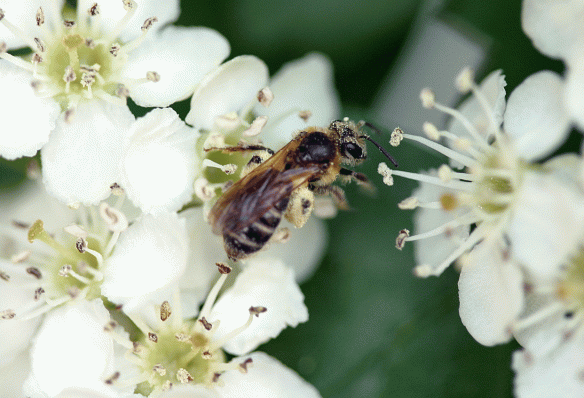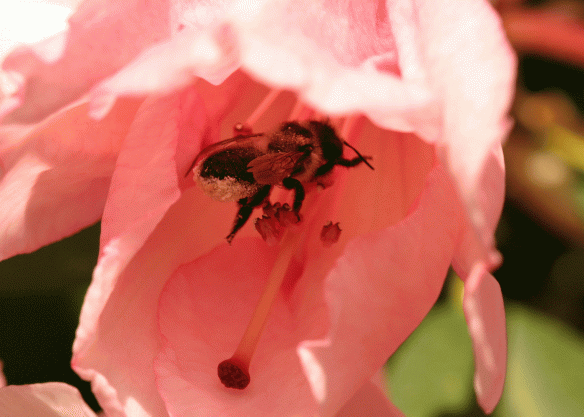I’ve been collecting pollen from lupin and wisteria; both have similar flowers–typical of the pea family–blossoms with wings, a banner petal and a keel! Very cool. It seems that not every bee can readily access the special floral shape, but bumblebees can. They’ve got enough size and heft to pry their way into the bloom’s center.
Intense orange pollen from this species of lupin.
This leaf-cutter bee had no problems getting into blossoms of my Japanese white wisteria. She’s been foraging on the flowers right along with the bumblebees.
The pollen from the wisteria anthers–a lovely pale grey-brown.
The exquisitely shaped and detailed wisteria blossom. The tip of the keel is lavender and the banner spot is almost a lime green.
















